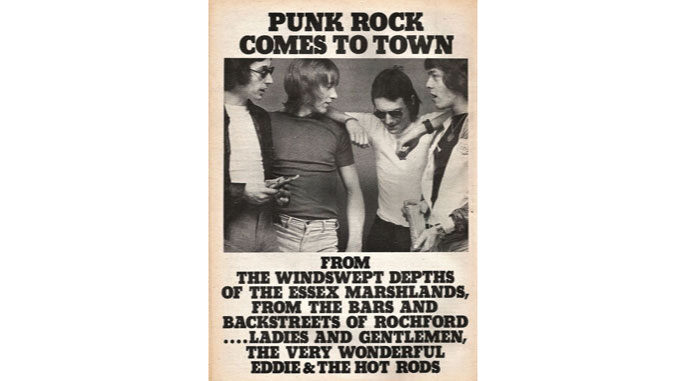
In his most recent book Lightning Striking (review here), Lenny Kaye lists ten pivotal moments in the history of Rock and Roll. One of the transformative occasions mentioned is the emergence of punk rock that Kaye places in London 1977. By all means, there exist such ground-breaking disruptions in music history as this one, but these grand-scale quantum leaps are also preceded by subtle micro level changes that are barely noticeable.
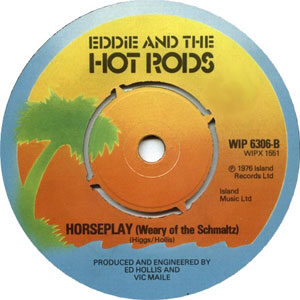 In this article we will investigate the details of such a small-scale event. To do so, we select and compare two versions of a song in order to describe how nascent punk rock interacted with pub rock, bearing in mind that this is just one of many such brief instances which are otherwise easy to overlook. Our particular slice of history is carved out by dissecting Horseplay, a song that Eddie and the Hotrods recorded twice in 1976. The difference between the two versions may appear subtle at first glance but appears profound upon careful listening. But first, a brief contextual background.
In this article we will investigate the details of such a small-scale event. To do so, we select and compare two versions of a song in order to describe how nascent punk rock interacted with pub rock, bearing in mind that this is just one of many such brief instances which are otherwise easy to overlook. Our particular slice of history is carved out by dissecting Horseplay, a song that Eddie and the Hotrods recorded twice in 1976. The difference between the two versions may appear subtle at first glance but appears profound upon careful listening. But first, a brief contextual background.
The Canvey Island Connection
Some say that Eddie and the Hotrods were kid brothers of their Canvey Island compadres, Dr. Feelgood. Such a statement is valid although the age gap is not generally applicable – Dave Higgs, who played guitar in Eddie and the Hotrods, was older than his bandmates and two years senior to the lead singer in Dr. Feelgood, Lee Brilleaux. To blur the line between these two combos even more: some of the members from each band had played together before Dr. Feelgood and Eddie and the Hotrods eventually formed. Thus, it’s reasonable to state that Eddie and the Hotrods were foremost a mentally younger edition of Dr. Feelgood. More urgent, more up tempo and somewhat noisier. Like Dr. Feelgood chased by bloodhounds.
However, these Canvey Islanders were more alike than different. Two features stand out in this respect. Firstly, they were both extraordinary live acts with high energy performances with magic that was captured on record early in their careers. Second, they had common musical roots, namely classical straightforward Rock and Roll/Rhythm and Blues, even if – also judged by the covers recorded – Eddie and the Hotrods preferred the ‘60s over the ‘50s which made up Dr. Feelgood staple inspiration.
Since Eddie and the Hotrods’ debut (Writing On The Wall/Cruisin’ (In The Lincoln); February 1976) lagged about 15 months behind Dr. Feelgood’s first 7” (Roxette/Route 66; November 1974) they had some serious catching up to do.
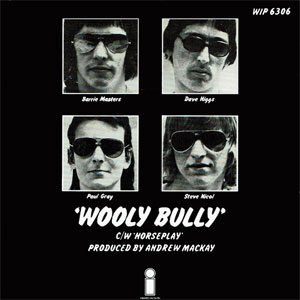
Single version
A month before Eddie and the Hotrods made their first mark on music history with the seminal Live At The Marquee EP (July 1976) reaching # 43 in the UK charts, they released their second single in Britain – a cover of Wooly Bully, a 1965 original by Sam the Sham and the Pharaohs, which is backed with the item of our interest here: Horseplay (Weary Of The Schmaltz).
This first take on Horseplay was Eddie and the Hotrods’ last recording as a five-piece band that included harp specialist Lew Lewis. His harmonica is very prominent here. All over the place and used just like a rhythm instrument in the production. It adds a rhythm and bluesy flavor to the song that recalls how Lee Brilleaux’s harmonica solos helped illuminate many Dr. Feelgood’s songs, like Roxette. Dave Higgs’ guitar style here owes a lot to Lee’s fellow member, Wilko Johnson, but unlike the early mono no overdub recordings of Dr. Feelgood, Higgs’ guitar is recorded twice in stereo with considerable channel separation to go along with it. All in all, here production-wise Horseplay resembles a Dr. Feelgood song fired up with a little extra desperation but with a more elaborate sound (to satisfy the hi-fi nerds?).
Horseplay is a Dave Higgs (music) and Ed Hollis (lyrics) composition. The speeded lyrics are hard to perceive and decipher in detail, but I assume they contain some allusion to drugs (Horse = heroin) as the opening line: “Standing in the alley waiting for my man” also shows. And maybe also a nod to a line of the nonsense lyrics to Do The Strand by Roxy Music from 1973: “weary of the waltz and mashed potato schmaltz”.
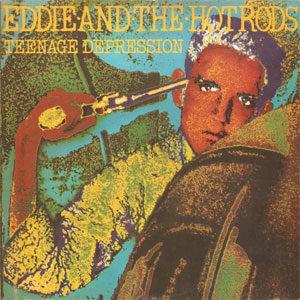
Album version
The debut album by Eddie and the Hotrods, Teenage Depression, is rightly considered to be the missing link between pub rock and punk rock which, by the way, was released in November 1976 – four days before Sex Pistols’ Anarchy In The UK, telling how early Eddie and the Hotrods was out on the record market compared to what is now considered as ordinary punk bands. Having created such a missing link does not necessarily mean that the band was bound to evolve into punk rock (provided that you accept that British punk rock partially evolved from pub rock).
When Horseplay shows up on record for the second time, it has the comparative form of the title between brackets: (Wearier Of The Schmaltz) pointing out that Eddie and the Hotrods believed that some musical progression had been achieved after all. If so, it is some kind of backward progression because on the album Horseplay is back to mono and just one guitar. Dave Higgs is credited for playing the piano, but it takes a lot of imagination to hear it. Since the tempo was already set to maximum on the single, the album version could not offer any speed increase as is often the case in the punk setup. But, maybe most importantly, the lack of harmonica as reference to the earlier pub rock concept is gone and such a reference would have fitted less well in the Teenage Depression set up.
This rougher attitude is a sign of the times. During 1976, London’s music scene evolved towards faster and louder live performances – a concept spearheaded by Eddie and the Hotrods. With that in mind, it makes sense that this newly acquired energy boost on the live scene also transferred to how Horseplay unfolded in the studio and how it was produced. A back to basics no frills approach that typified the core values of nascent punk.
What’s the summary and conclusion then?
While Eddie and the Hotrods certainly soaked up and defined the pre-punk zeitgeist in 1976, that doesn’t qualify them to be considered a genuine punk band by today’s standards. They also didn’t evolve in that direction when punk became the talk of the town and they were furthermore a little bit old school (no negative characteristic) to share features with upcoming London punk bands as The Damned, The Clash and The Sex Pistols. On the contrary, Eddie and the Hotrods distanced themselves from that community even more when Graeme Douglas was included as the fifth member who led them in the direction of a more pop-oriented sound. Douglas was lead guitarist in Kursaal Flyers 1973–1976 – another pub rock band hailing from nearby Canvey Island (Southend-On-Sea) further showing that Eddie and the Hotrods’ primary network at the time was local and focused on the pub rock circuit.
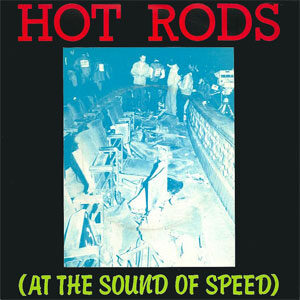 Graeme Douglas’ first record with Eddie and the Hotrods was the At The Speed Of Sound EP (recorded February 1977), a live recording that included Horseplay – this time with Douglas’ ubiquitous and redundant guitar figures trying to achieve the same effect as Lew Lewis’ harp on the single version, but without making anything positive of it. (Instead, his guitar excursions tend to be a somewhat annoying show-off here.)
Graeme Douglas’ first record with Eddie and the Hotrods was the At The Speed Of Sound EP (recorded February 1977), a live recording that included Horseplay – this time with Douglas’ ubiquitous and redundant guitar figures trying to achieve the same effect as Lew Lewis’ harp on the single version, but without making anything positive of it. (Instead, his guitar excursions tend to be a somewhat annoying show-off here.)
The concept of pub rock is problematic when it comes to finding a definition of similarity in musical orientation. A variety of bands with no common musical traits, apart from the fact that they used to entertain the pub crowd with down-to-earth rock, are lumped together under this heading. At one end of the spectrum, this diverse collection included Ace, Brinsley Schwarz and Chilly Willy And The Red Hot Peppers to Dr. Feelgood, Ducks Deluxe and Eddie and the Hotrods at the other end. Dr. Feelgood and Eddie and the Hotrods led the energization of the London music scene while some pub rock bands acknowledged this and added a higher energy level to their attitude. I fought The Law by Ducks Deluxe (1975) and Televison Generation by Kursaal Flyers (1977) are two such prime examples of transferring the intensification further into the recording studio. Other pub rock bands let the early signs of the punk revolution pass unnoticed and carried on to the bitter end just like nothing was happening.
Thus, Eddie and the Hotrods up to 1977 had more qualities reminiscent of pub rock (albeit spiced with punk frustration) than itself being an early representation of punk rock. Their main contribution to the evolution of music was that they paved the way for the punk uprising by reshaping the London live scene in 1976. But Eddie and the Hotrods did so without ending up as a punk rock band themselves.
Sources:
Will Birch: No Sleep Till Canvey Island (2000)
Zoë Howe: Lee Brilleaux: Rock’n’Roll Gentleman (2019)
Only Rock’n’Roll: Too Much, Too Soon: Ed Hollis and Speedball Records
Punk77: Eddie And The Hotrods History Part 1
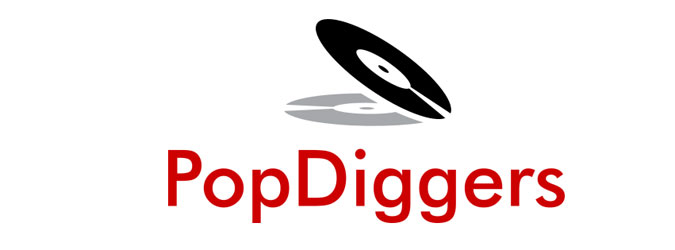
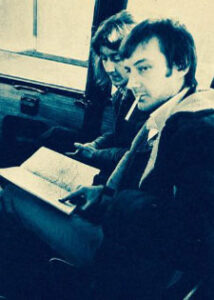
Be the first to comment